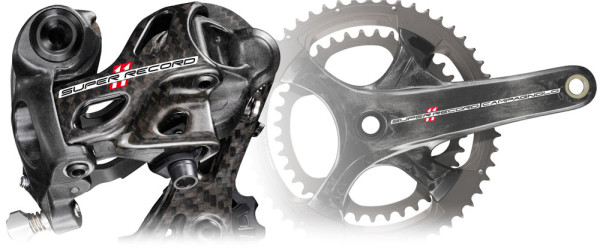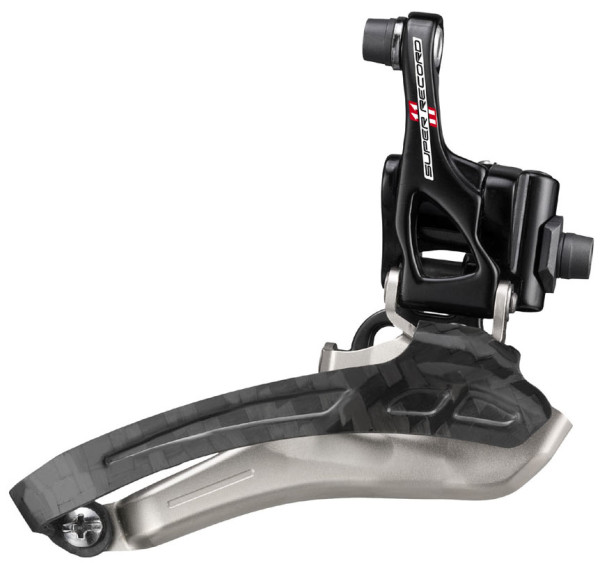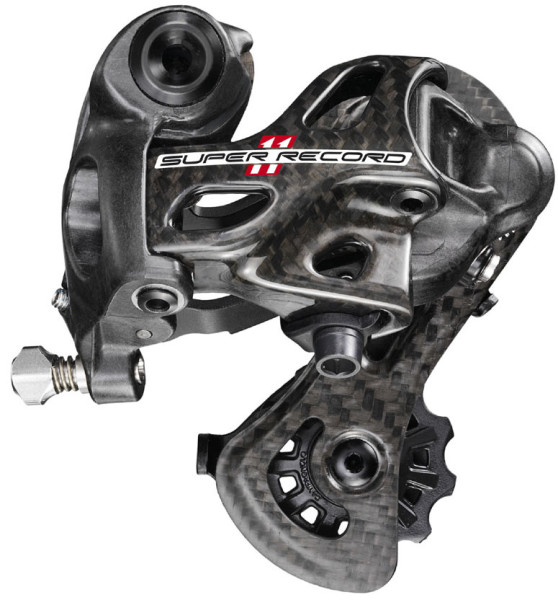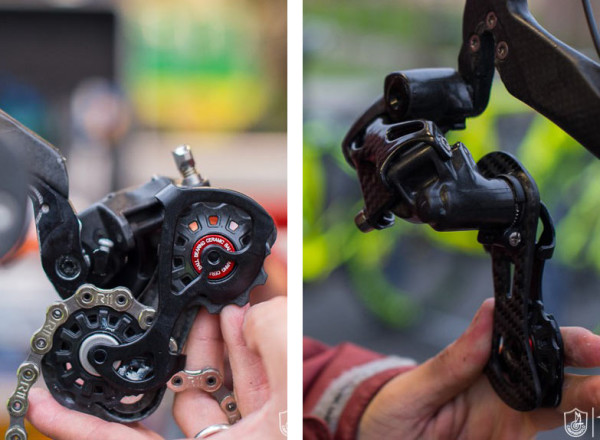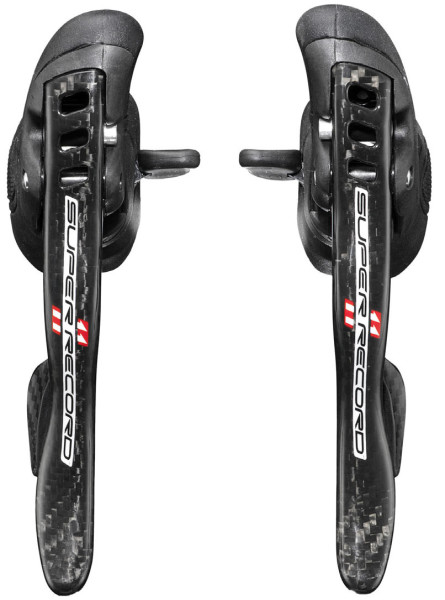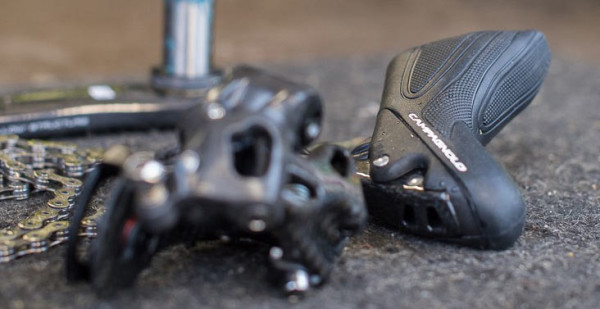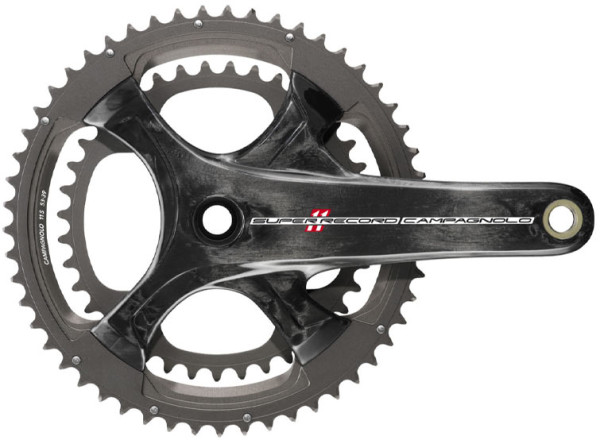The completely new, radically redesigned new Campagnolo Super Record group was first spied at the Giro d’Italia’s early stages, but the concepts it uses were first introduced to team riders in the limited edition Super Record RS hot rod kit unveiled in March that offered enhanced shifting.
Just as surprising as the move to a four-pronged crankarm is that the new carbon design for it and the rear derailleur trickles all the way down to Chorus outta the gate. That’s right, three completely new groups, all claiming to offer absolute top level performance for those preferring mechanical shifting to electronic. And by top level, Campy means it – the idea behind the new design was to make mechanical shifting every bit as desirable and awesome as their EPS, making the decision for top riders one of preference, not performance.
Shift past the break for the full run down…
Unless noted otherwise, the tech features mentioned apply to all three groups. The front derailleurs all use an inner cage based on the Super Record RS unit, which shapes it to be stiff and allow the chain to move across the entire cassette without rubbing in the big ring. What about the small chainring? Keep reading…
Where the RS version used a full alloy cage, the new Super Record upgrades to a one-piece carbon fiber outer plate to save a few grams. They use a longer arm, moving the cable clamp point further out to create more leverage. This translates to smoother, easier shifter effort, but angled to also require less finger movement.
The rear derailleur was redesigned from the ground up. A new outer structure makes it stiffer, wrapping the big knuckle around the upper parallelogram pivot
The linkage angles were tweaked along with the internal facing pieces and cage. This moves the chain closer to the cassette, helping it wrap around more teeth for better grip. Campagnolo says this not only improves power transfer, but it should also keep things better aligned for improved component durability. The revised angles also decrease shift effort at the top of the cassette, making it more linear across all cogs so shifting across an 11-23 feels the same as an 11-29.
The new derailleurs required new shifters, but all functional changes were made without messing up their existing ergonomics. Lever and hood shape remain the same, but things work with the revamped derailleurs and add a no-drop shift feature to the front. The left shifter now uses a two-click downshift moves the front derailleur enough to carry the chain from big to little ring, but not so far that it could drop the chain off the inside. Then a third click is available to trim the derailleur when necessary. Going back up to the big ring takes three clicks with no trim offered or, they claim, needed thanks to the new front derailleur’s plate shaping.
The Ultra Shift system still works as usual for the rear, with up to five downshifts and three upshifts per full lever push.
The shape your manos already amore is unchanged, but they did tweak the insides to help the levers better fit modern handlebars. The hoods use a new, hypoallergenic silicone with a multi-density, grooved and shaped structure to improve comfort and grip.
The most visibly different part is the crankset. Purists can scream, but Campagnolo says the new four-arm is stiffer and allows for a single crankset to work with every iteration of chainring, from compact to standard. Yep, just one BCD, as asymmetrical as it may be, will handle 50/34, 52/36 and 53/39.
Convenience features aside, the real goal was improved performance. The backside uses eight bolts, four for each chainring, each helping to support the chainrings, not just hold them onto the arms. That support, plus the massively stiffer carbon crank arms, yields better power transfer and more precise, snappy shifting. They’ll be available in 170, 172.5 and 175mm lengths.
FAMILY PHOTOS
Click any image to enlarge, we’ve inquired about weights, pricing and availability and will update as soon as we hear back.
